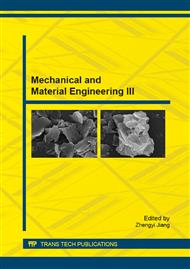p.92
p.96
p.100
p.105
p.110
p.116
p.120
p.124
p.128
Experimental Studies of Alternating and Direct Current Impedance Properties of Ag/AgCl Electrodes
Abstract:
Ag/AgCl electrodes as an important sensor are used in modern clinical detection and biomedical measurement, which have been widely applied in electrocardiograph (ECG), electroencephalogram (EEG), electromyography (EMG), electricity impedance technology (EIT) and so on. In this study, the electrode pairs were gel-to-gel connected. After a stimulating current, the alternating current (AC) or the direct current (DC), was injected through the electrode pair, the electrical potential was recorded, then impedance data of Ag/AgCl electrode was obtained. The results showed that the AC impedance of electrode increased, and then gradually decreased with the increase of current size. It was found that the DC impedance data of Ag/AgCl electrode was changed greatly after the electrode pair was injected into the alternating current. With the long time continuous measurement, the AC impedance of electrode pair gradually increased within the 12 hours. However, the significant fluctuations of AC impedance were observed after 12 hours. Comparing with the AC impedance, the DC impedance of electrode pair exhibited a great increase with the increase of measurement time.
Info:
Periodical:
Pages:
110-115
Citation:
Online since:
July 2015
Authors:
Keywords:
Price:
Сopyright:
© 2015 Trans Tech Publications Ltd. All Rights Reserved
Share:
Citation:


